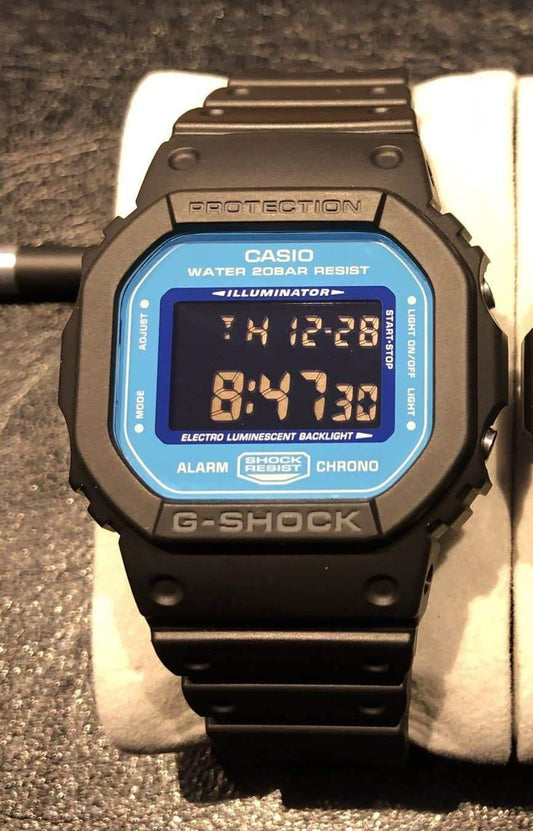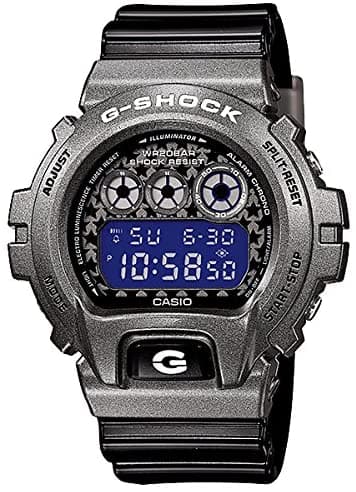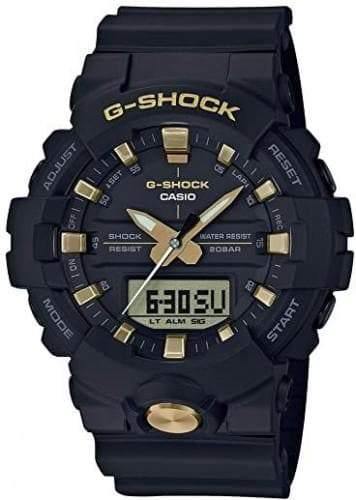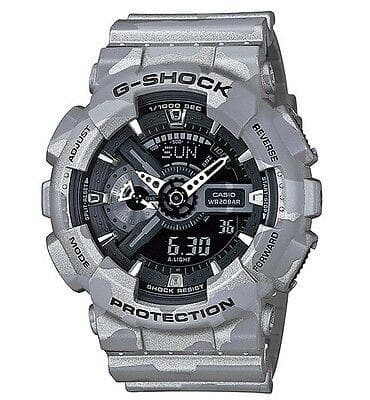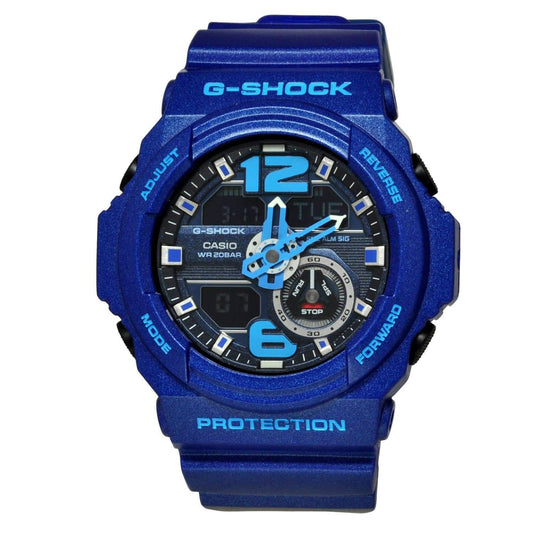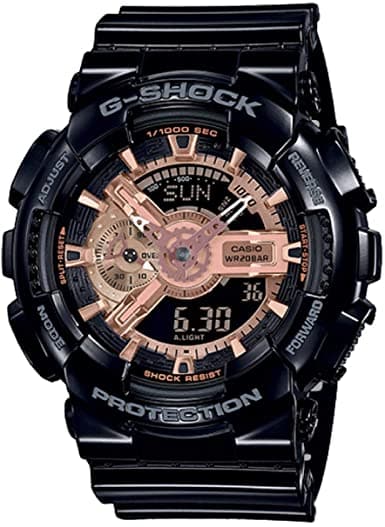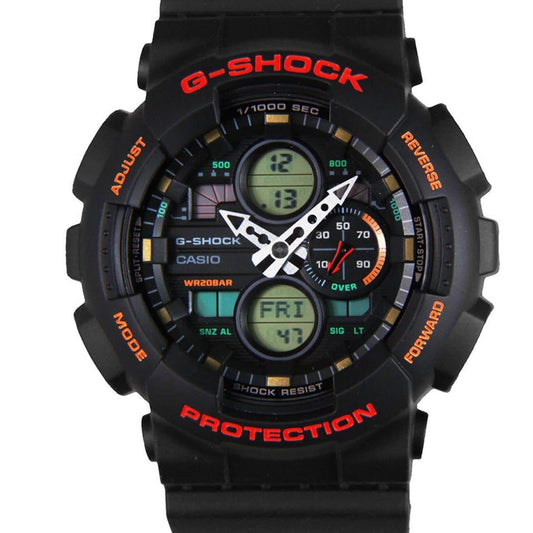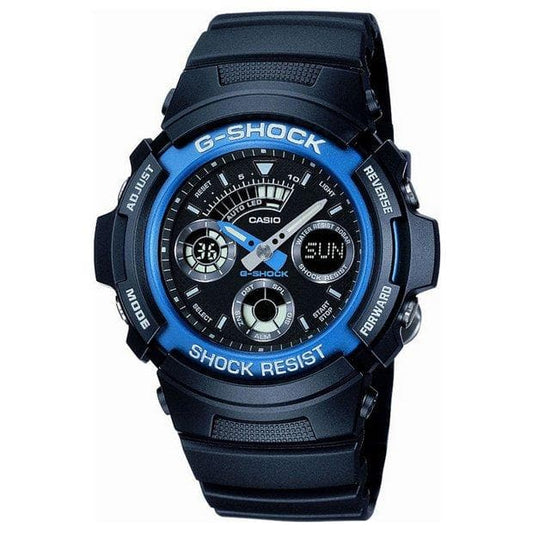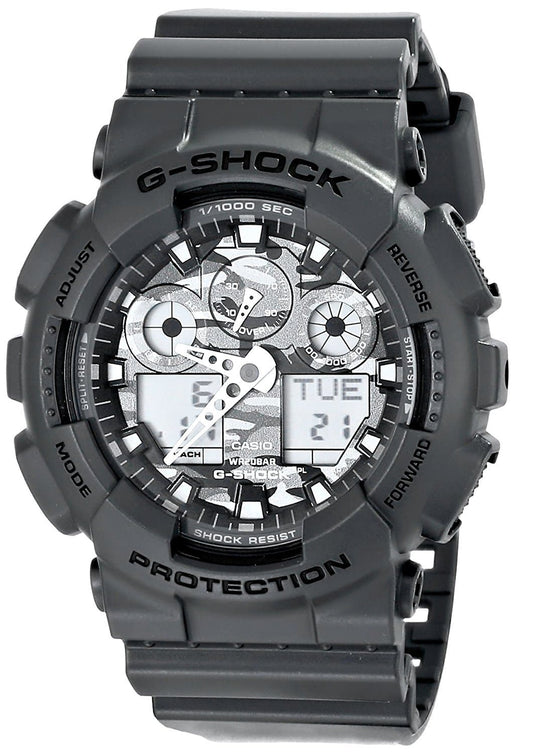G-Shock is a line of watches manufactured by Japanese electronics company Casio, designed to resist mechanical shock and vibration. G-Shock is an abbreviation for Gravitational Shock. The watches in the G-Shock line are designed primarily for sports, military and outdoors-oriented activities; nearly all G-shocks are digital or a combination of analog and digital and have a stopwatch feature, countdown timer, electroluminescent backlight and 200-metres of water resistance.
The G-Shock was conceptualised in 1981 by a Casio engineer when he accidentally dropped a pocket watch gifted to him by his father thus breaking it. The G-Shock was conceived as a watch which would have triple 10 resistance, meaning it would have a battery life of 10 years, have a water resistance of 10 bar and could survive a fall of 10 meters.
A team of three individuals was selected by Ibe which was known as "team tough". The team had assembled and tested nearly 200 prototypes but were still not able to achieve the conception criteria. During a visit to a playground, Ibe discovered that in a rubber ball, the centre of the ball doesn't suffer the effects of the shock during a bounce on a rough surface which gave him the idea to implement that concept into the watch. With that in mind, the team set out to develop a watch using such a concept and in 1983, the first G-Shock: the DW-5000C was launched.
The shock-resistant design on the original G-Shock has 10 layers protecting the quartz timekeeping module, including a urethane rubber bumper, the stainless steel case, the hardened mineral glass watch crystal, the stainless steel screwed down caseback, and the "floating module" where the quartz mechanism floats free in a urethane foam cradle, with the outer buttons and LCD module attached with flexible cables. The strap of the watch is also designed to protect the module during a fall.
Casio released the G-Shock in April 1983, to fill the demand for durable watches. Sales were sluggish in Japan as people preferred dress watches. In order to promote the G-Shock worldwide, the American division of Casio released a commercial in which an ice hockey player used the DW-5000C as a hockey puck to demonstrate the toughness of the watch. The commercial gained negative publicity and Casio was accused of false advertising. A TV news channel then set out to conduct live tests on the DW-5000C to check whether it was as tough and durable as advertised. This involved repeating the action shown in the commercial. The DW-5000C survived the impact of the hockey stick and the G-Shock gained popularity among the general public. The popularity of G-Shocks increased throughout the 1990s. By 1998, Casio had released more than 200 different G-Shock models, with worldwide sales at 19 million units.
On December 12, 2017, the G-Shock earned the Guinness World Record for the heaviest vehicle to drive over a watch. The officials from Guinness World Record drove a 24.97 ton truck over the Casio G-Shock DW5600E-1. The G-Shock is the first watch by any company being able to withstand the challenge.
-
Casio G-Shock Digital Blue Marvel Sky Blue Dial Black Watch DW5600SN-1DR
Regular price₱5,995.00 PHP Regular priceUnit price per₱5,995.00 PHP -
Casio G-Shock Sports Digital Crazy Colors Silver x Black Watch DW6900SC-8DR
Regular price₱7,995.00 PHP Regular priceUnit price per₱7,995.00 PHP -
Casio G-Shock Analog-Digital Black x Gold Accents Watch GA810B-1A9DR
Regular price₱5,995.00 PHP Regular priceUnit price per₱6,995.00 PHP ₱5,995.00 PHP Sold out -
Casio G-Shock GA110 Series Military Grey Camo Black Dial Watch GA110CM-8ADR
Regular price₱6,995.00 PHP Regular priceUnit price per₱8,995.00 PHP ₱6,995.00 PHP Sold out -
Casio G-Shock Big Size Series Analog-Digital Metallic Blue Watch GA310-2ADR
Regular price₱5,195.00 PHP Regular priceUnit price per₱7,995.00 PHP ₱5,195.00 PHP Sale -
Casio G-Shock X-Large Series Anadigi Rose Gold Dial Glossy Black Watch GA110MMC-1A
Regular price₱6,995.00 PHP Regular priceUnit price per₱6,995.00 PHP ₱6,995.00 PHP -
Casio G-Shock Standard Digital Basic Color Black Watch DW5900-1DR
Regular price₱3,995.00 PHP Regular priceUnit price per₱3,995.00 PHP Sold out -
Casio G-Shock G’MIX Mobile Link Bluetooth Anadigi Metallic Orange Watch GBA400-4BDR
(1)Regular price₱7,995.00 PHP Regular priceUnit price per₱9,995.00 PHP ₱7,995.00 PHP Sold out -
Casio G-Shock GA120 Model Black x Red x Grey x White Accents Watch Last Dance GA120-1ADR
Regular price₱5,495.00 PHP Regular priceUnit price per₱5,995.00 PHP ₱5,495.00 PHP Sold out -
Casio G-Shock Standard Analog-Digital Basic Color Black Watch GA140-1A4DR
Regular price₱4,995.00 PHP Regular priceUnit price per₱6,995.00 PHP ₱4,995.00 PHP Sold out -
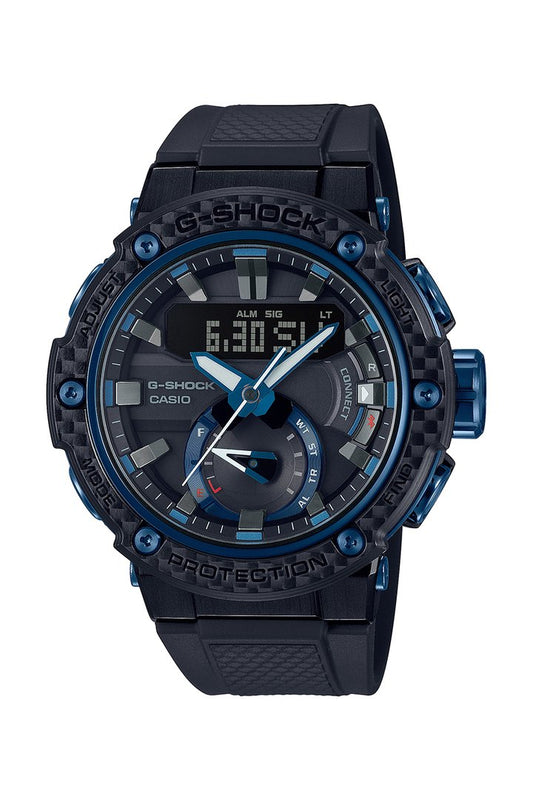
Casio G-Shock G-Steel Mobile link Bluetooth Anadigi Black x Blue Accents Watch GSTB200X-1A2DR
Regular price₱35,145.00 PHP Regular priceUnit price per₱36,995.00 PHP ₱35,145.00 PHP Sold out -
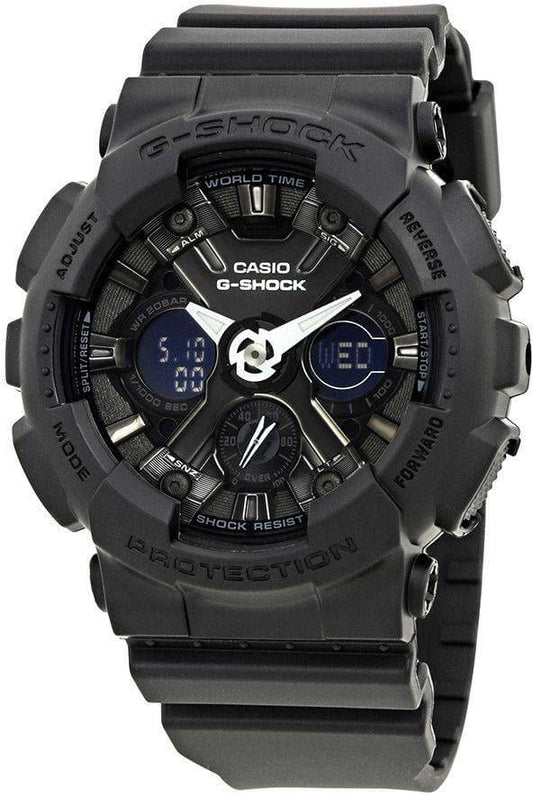
Casio G-Shock Black Stealth Series Anadigi Black Metallic Face Ladies' Watch GMAS120MF-1ADR
Regular price₱6,395.00 PHP Regular priceUnit price per₱7,995.00 PHP ₱6,395.00 PHP Sold out -
Casio G-Shock Standard Analog-Digital Black x Blue Watch AW591-2AHDR
Regular price₱3,995.00 PHP Regular priceUnit price per₱4,995.00 PHP ₱3,995.00 PHP Sale -
Casio G-Shock Black Stealth Series Analog-Digital All Black Watch AW591BB-1ADR
Regular price₱4,995.00 PHP Regular priceUnit price per₱4,995.00 PHP -
Casio G-Shock Standard Analog Digital Black x Blue Watch GA100-1A2DR
Regular price₱4,495.00 PHP Regular priceUnit price per₱5,995.00 PHP ₱4,495.00 PHP Sale -
Casio G-Shock Military Grey Camo Camouflage Print Dial Black Watch GA100CF-8ADR
Regular price₱4,995.00 PHP Regular priceUnit price per₱5,995.00 PHP ₱4,995.00 PHP Sold out

